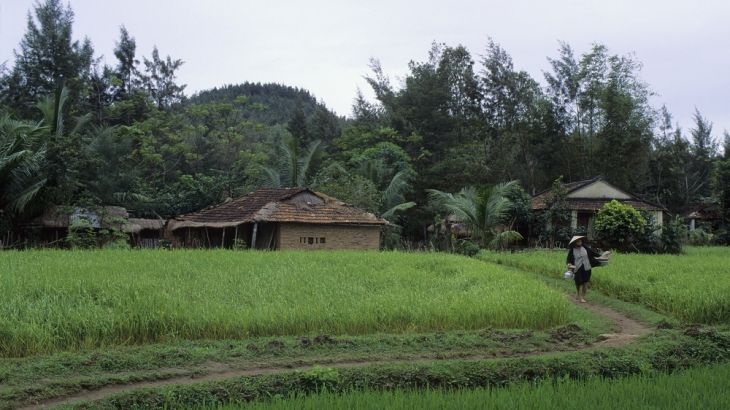
Heart of Darkness: Return to the My Lai massacre
A Vietnam War vet returns for the first time to meet survivors of the My Lai massacre and set the record straight.
Ten years ago, Al Jazeera Fault Lines host Josh Rushing travelled to Vietnam with a former US soldier who had taken part in the worst civilian massacre by US forces during the Vietnam War. They revisited the site of the My Lai massacre and met some of the few villagers who survived.
Pham Thi Tuan lay motionless among dead bodies for hours in a ditch that she and her baby daughter had been herded into, along with more than 100 other people. It was only her father’s corpse that prevented her from being killed on March 16, 1968, in what became known as the My Lai massacre.
At 75, Pham was one of the few remaining survivors of the atrocities that saw US soldiers from Charlie Company fly chopper by chopper into the tiny hamlet in central Vietnam, and spend the next four days killing and maiming up to 500 innocent, unarmed Vietnamese, many of whom were women and children.
Pham Thanh Cong has dedicated his life to making sure the massacre remains in the public conscience. He was 11 at the time of the attacks, and still bears a mark from a bullet that nearly killed him. He is now in charge of the museum dedicated to the victims of the massacre, and the caretaker of what remains of the small village where they lived.
No member of Charlie Company has returned to the scene of the massacre before, but, 40 years after being charged with killing nine Vietnamese villagers, veteran Ken Schiel was persuaded by Rushing to return to the scene of the war crime and meet survivors.
Schiel, like many US soldiers in Vietnam, was only 19 years old at the time, and has trouble recognising the village when he returns.
“I was a soldier following orders. And I believe that’s how I dealt with that then. And that’s how I deal with it today,” Schiel said, while touring the museum. “Did I shoot? I’ll say that I shot until I realised what was wrong … I’m not going to say whether I shot villagers or not.”
When Schiel met Cong, the survivor who runs the museum, neither man was aware of the other’s past.
“I was part of the Americans that landed here in the helicopters. And I want to apologise to the people of My Lai,” Schiel said.
“I ask myself all the time, ‘Why did this happen?’ I don’t know. A sad feeling and an angry feeling are rising up in my heart. The US soldiers killed my mother, my older sister, and my younger brother,” Cong replies.
Now, 10 years on, John Rushing, himself a veteran of 15 years in the US Marine Corps, talks to REWIND about the emotional effect of making Heart of Darkness and how many of those who have fought in war ultimately come to recognise its futility.
Read more about John Rushing’s experience of making the film here.